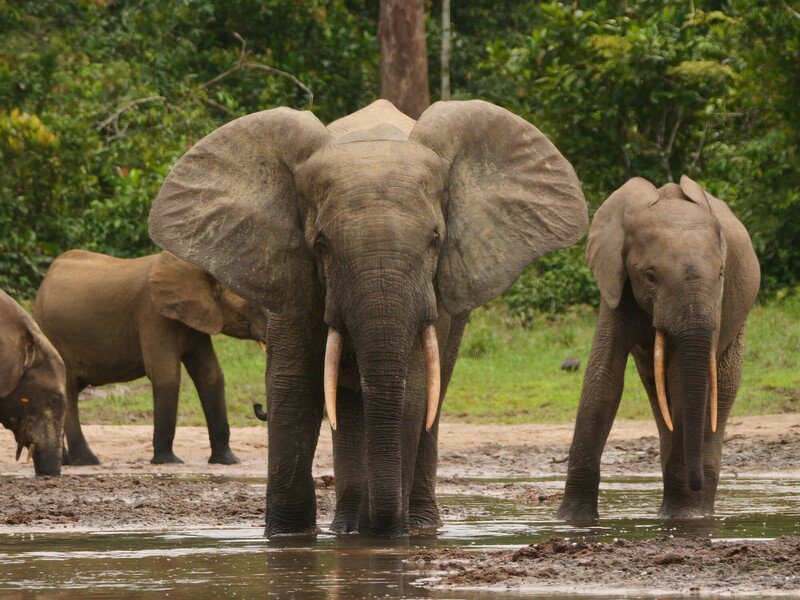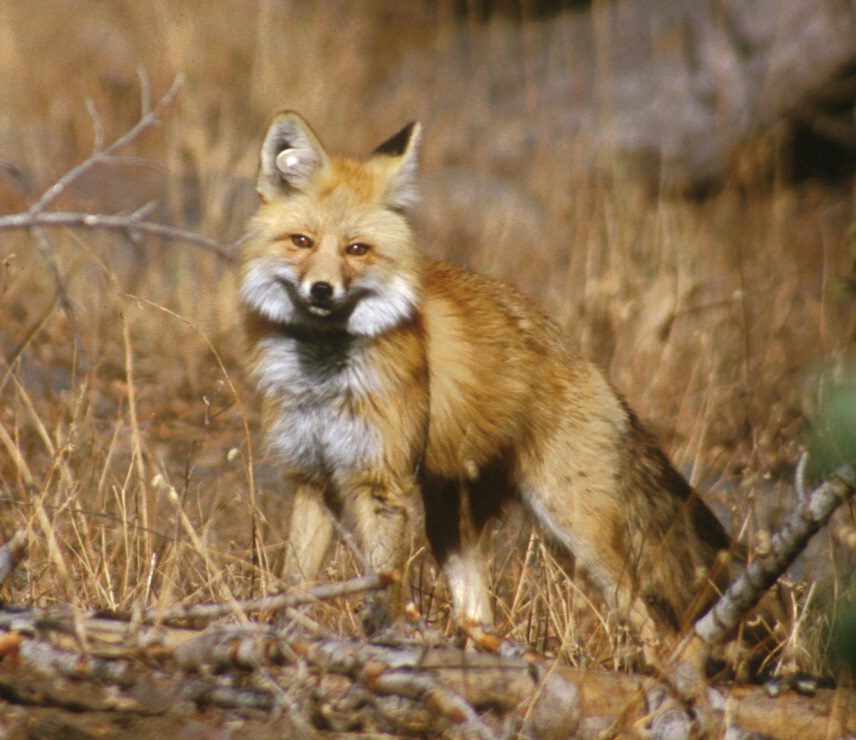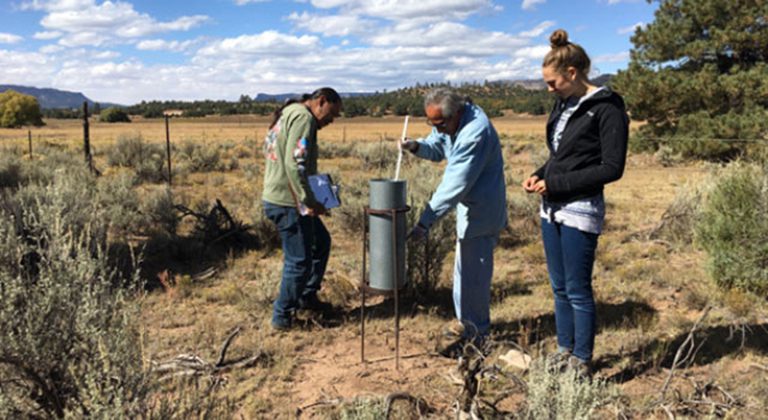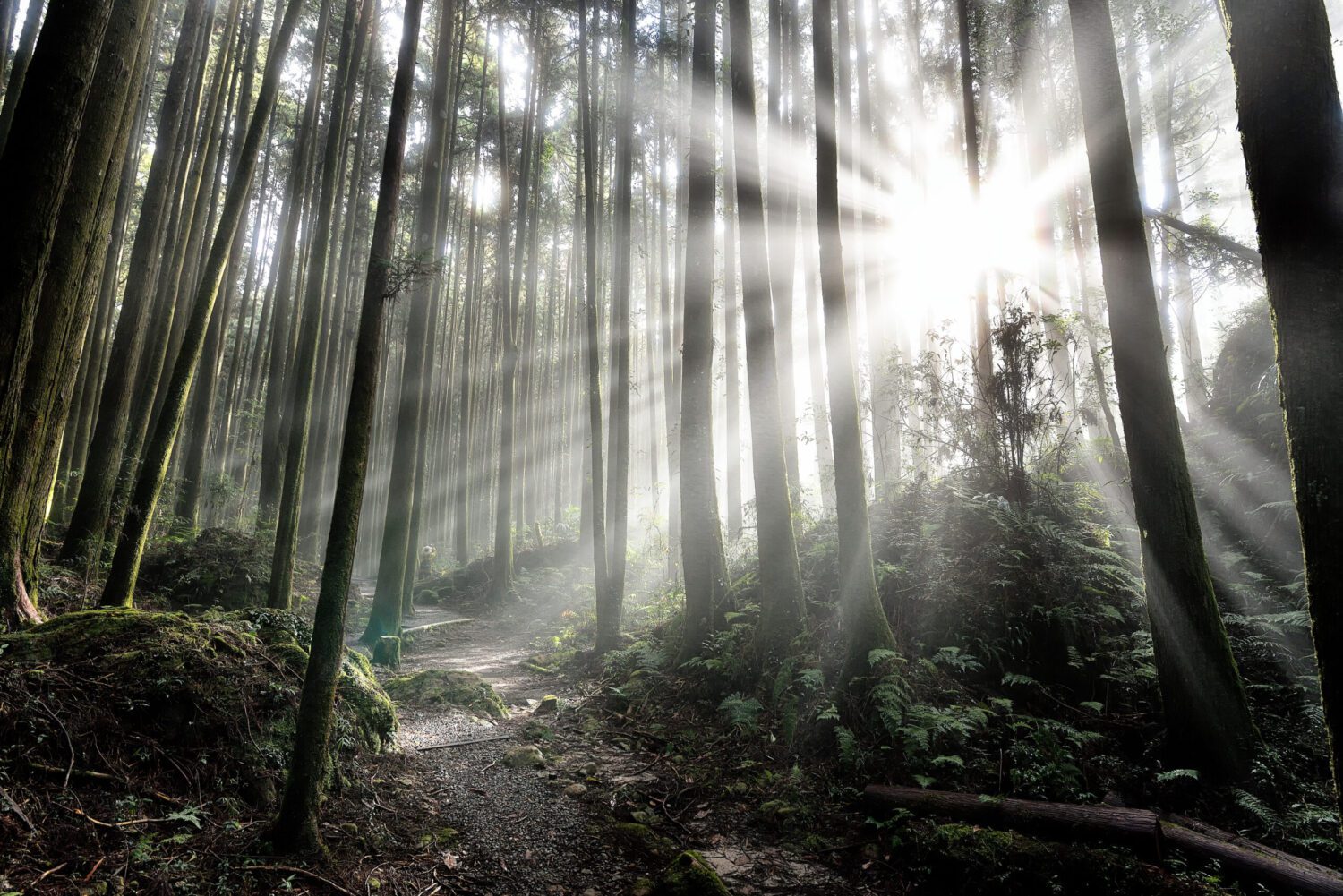


Critically endangered elephants have been losing the battle against ivory poaching. Now they face a new rising threat: fossil fuel development.
By Reynard Loki, Independent Media Institute
12 min read
Just like our own ancestors, the precursors of today’s elephants originated in Africa. But while Homo sapiens evolved from their predecessors between 200,000 and 300,000 years ago, modern elephants first arrived on the evolutionary map much earlier: 56 million years ago. Our arrival ultimately presented these majestic animals with their gravest threat, as we have killed them in great numbers for their ivory and destroyed their prehistoric habitats to make room for a host of human activities, from agriculture and logging to urbanization and other forms of land development. Now a new assessment of the pachyderms has revealed a stark reality and a turning point, something that conservationists have been worrying about for the past few decades: If poaching doesn’t subside soon and humans don’t stop encroaching on their ecosystems, wild elephants in Africa could become extinct in our lifetime.
Nearly a century ago, between 5 and 10 million wild elephants freely roamed across a massive expanse of the African continent, from wide swaths of savanna grassland and arid desert to thick, impenetrable forests. But decades of slaughter and habitat loss have gutted elephant populations. By the 1990s, when their numbers had dramatically plummeted to only about 600,000 and their range was reduced to a few nations across the continent, African elephants were placed on the international list of critically endangered species.
The International Union for Conservation of Nature (IUCN), an international nature conservation organization with observer and consultative status at the United Nations, maintains the Red List of Threatened Species, the primary resource that keeps track of the statuses of endangered and threatened species across the planet. The IUCN African Elephant Status Report is considered to be the most reliable estimate of the African elephant population. The most recent report, from 2016, puts their numbers at around just 415,000 individuals. On March 25, the group announced that elephants in Africa face a serious risk of extinction. Before last month’s update, African elephants were considered to be a single species, listed as “vulnerable.” With their new report, IUCN has officially identified African elephants as two distinct species (following the emergence of new genetic evidence) and escalated the threat level they face. Savanna elephants (Loxodonta africana) are now listed as “endangered,” while forest elephants (Loxodonta cyclotis) are listed as “critically endangered.”
“Africa’s elephants play key roles in ecosystems, economies and in our collective imagination all over the world,” said Dr. Bruno Oberle, the director-general of IUCN, adding that the new Red List assessments of both African elephant species “underline the persistent pressures faced by these iconic animals.” He added, “We must urgently put an end to poaching and ensure that sufficient suitable habitat for both forest and savanna elephants is conserved. Several African countries have led the way in recent years, proving that we can reverse elephant declines, and we must work together to ensure their example can be followed.”
Part of their iconic stature that drives our collective imagination comes from their sheer size: Elephants are the biggest land mammal. And they also have massive brains, three times the size of ours, with individual neurons up to five times larger than human brain cells. “To look an elephant in the face is to gaze upon genius,” argues Ferris Jabr, a contributing writer for Scientific American. “Here is a creature who experiences emotional intimacy with friends and family, who seems to understand death and treats its dead in a way that borders on ceremonial. Here is an animal who can recognize itself in the mirror, fashion twigs into tools, formulate and implement plans, and remember someone’s face for decades. An animal that has exquisite ways of sensing the world we can never experience firsthand and a complex language we will probably never decipher. An animal whose cleverness parallels our own, yet is in many ways unique.”
Sadly, their cleverness cannot compete with our rifles or our desire for their tusks. Broadly, IUCN found a substantial decline in elephant numbers across the African continent, with forest elephant numbers falling by more than 86 percent over a period of 31 years, while the population of African savanna elephants decreased by at least 60 percent over the last half-century. The declines were mainly due to a significant increase in poaching to acquire their massive teeth that stick out so magnificently from their mouths: Ivory is valued at more than $2,000 a kilo in Asian markets. In traditional Chinese medicine (TCM), elephant tusks are used to treat a myriad of health conditions, including epilepsy, ulcers and bone tumors, though there is no scientific evidence for any medicinal value in ivory.
It’s not just the TCM market that is driving the slaughter—American trophy hunters, hiding behind the misguided logic that killing Africa’s wild animals supports conservation efforts, imported an average of 460 African elephant trophies every single year between 2005 and 2014. Lawmakers on Capitol Hill have an opportunity to end some of the bloodshed. In 2019, Rep. Sheila Jackson Lee (D-TX) introduced H.R.4804, the ProTECT Act, which would outlaw the importation of endangered and threatened species trophies.
In March of 2020, Nicole Rojas, a Chicago-based activist who founded the animal rights group Wild for Change, launched a public petition on Change.org urging Americans to tell their congressional representatives to sponsor or support the ProTECT Act. Rojas, who worked with the Humane Society of the United States and Tusk Task Force to ban the elephant ivory and rhino horn market in Illinois, believes that education is key in making the shift in consciousness on a meaningful scale. After three years of working with Illinois state legislators, the ban was made into law and she set her sights on the power of young people. “I expanded my involvement with legislation and advocacy to all animals, including wildlife, farm animals, and domestic pets,” she writes. “I created an outreach program to schools to educate children and young adults about wildlife poaching and its effects on ecosystems, people, and other wildlife.”
Tanya Sanerib, international legal director at the Center for Biological Diversity, a nonprofit conservation group based in Tucson, Arizona, believes that the IUCN report can be a powerful educational tool for those with the power to legislate and regulate on a federal level, saying that this new assessment “is a signal to the United States and the international community that major resources must be put into curbing ivory poaching and trafficking, closing remaining domestic ivory markets, and saving these marvelous, irreplaceable engineers of the forest and savanna from extinction.”
The assessment follows the first-ever pan-African survey of savanna elephants, which was conducted in 2013. A monumental undertaking involving 81 airplanes and 286 crew members, the Great Elephant Census took aerial surveys spanning more than 285,000 miles across 18 African countries to arrive at a tragic conclusion: Savanna elephant populations declined by 30 percent (the loss of about 144,000 elephants) between 2007 and 2014, and the current rate of decline is 8 percent per year, with poaching as the main cause. The survey saw high numbers of elephant carcasses in many protected areas, meaning that elephants are not fully safe inside parks meant to keep them safe. All told, the census revealed that, in 15 of the 18 countries surveyed, populations of African savanna elephants have plummeted.
“The IUCN’s announcement is a terrifying one, but it is also an opportunity for range nations and for those that deal in trafficked and trophy hunted products to act swiftly and pull out all the stops to protect these gentle giants,” write Kitty Block, the president and CEO of the Humane Society of the United States, and Sara Amundson, the president of the Humane Society Legislative Fund. “A world without them is simply unthinkable.”
The assessment comes on the heels of more alarming developments for African elephants: ReconAfrica, a fossil fuel company based in Vancouver, Canada, is exploring for oil and gas in the Kavango Basin, an eco-sensitive area in southwest Africa that sits along the border of Namibia and Botswana. This region encompasses the Okavango Delta, a UNESCO World Heritage Site that is home to significant populations of elephants, hippos, rhinos and birds. In addition to threatening the biodiversity of the area, the oil and gas exploration project is poised to unleash what Greenpeace has dubbed a “carbon gigabomb” that would consume one-sixth of the world’s remaining carbon budget, which in turn would risk derailing the Paris climate agreement’s goal of limiting global warming to 1.5 degrees Celsius above pre-industrial levels in order to avoid the worst impacts of climate change.
Ina-Maria Shikongo, a Namibian-based activist with Fridays for Future, a global climate strike group founded in the wake of Greta Thunberg’s rise to stardom, said that “under cover of COVID-19, oil and gas [companies] are rushing to cash-in on what they suspect is the last great fossil fuel find, as oil prices plummet amidst a glut.”
In response to ReconAfrica’s project, Rainforest Rescue, a nonprofit environmental group based in Hamburg, Germany, launched a public petition in December urging President Hage Geingob of Namibia and President Mokgweetsi Masisi of Botswana to halt ReCon’s destructive plan. The petition argues that the project will not only foul the region’s limited water resources, create air pollution and cause deforestation and desertification due to land clearing—threatening a host of unique species at a UNESCO World Heritage Site—but will also create the roads that will make it easier for poachers to hunt and kill endangered elephants and rhinos. “The exploitation would be a catastrophe—not only for the global climate, but also for wildlife, water resources and the livelihoods of local people,” said Shikongo. “The oil needs to stay in the ground.”
Still, all is not lost. While the recent IUCN assessment shows the alarming overall trend of declining populations of both African elephant species, the group also pointed out that conservation efforts—including anti-poaching programs, legal protections in the form of legislation, and better land-use planning to avoid human-elephant conflict—have together made a significant impact in stemming the loss. These efforts have had a measurable impact in some conservation areas in the Republic of the Congo and Gabon, where some forest elephant numbers have stabilized, as well as in the Kavango-Zambezi Transfrontier Conservation Area, where savanna elephants have actually been stable for decades, and in some cases, even growing.
Dr. Dave Balfour, a member of the African Elephant Specialist Group, part of the IUCN Species Survival Commission, offers some advice to legislators and regulators working on this crisis. While the assessment puts populations of African savanna elephants in the endangered category, he says that “it is important to keep in mind that at a site level, some subpopulations are thriving [so] … considerable caution and local knowledge are required when translating these results into policy.”
“If we can’t save the African elephant, what is the hope of conserving the rest of Africa’s wildlife?” said Mike Chase, the principal investigator of the Great Elephant Census and the founder of Elephants Without Borders, a nonprofit elephant conservation organization based in Botswana. “I am hopeful that, with the right tools, research, conservation efforts and political will, we can help conserve elephants for decades to come.”
To generate political will, perhaps elephant activists can borrow an idea from the early feminists, who embraced the concept that “the personal is political,” and look at elephants as we look at ourselves and each other. “When we look into the eyes of the elephant,” says Jabr, “we should recognize nothing less than an intellectual equal.” We should also recognize that now, on the edge of their extinction, it is at long last time to stop the poaching, stop the encroaching and do everything we can to prevent the annihilation of our extraordinarily intelligent, emotional and magnificent fellow Earthling, the elephant.
Cause for concern…

“The Endangered Species Act is incredibly successful at saving species from extinction, but only if they’re provided its protections in the first place,” said Noah Greenwald, endangered species director at the Center for Biological Diversity, an environmental group that filed a lawsuit last week alleging the federal government has failed to act on petitions to protect nine species under the Endangered Species Act. “The U.S. Fish and Wildlife Service’s listing program is broken and badly in need of reform.”
- U.S. government has failed to act on petitions to protect nine species under the Endangered Species Act (Gillian Flaccus, Associated Press)
- Texas’s zombie oil wells are creating an environmental disaster zone (Clayton Aldern, Christopher Collins and Naveena Sadasivam, The Guardian)
Round of applause…

“We’ve been waiting for water for more than 50 years,” Navajo Nation resident Percy Deal told Bloomberg News, after President Joe Biden released his infrastructure plan that includes $111 billion to modernize the country’s water systems, which includes grants and low-cost loans to help tribes and territories. “We never knew when we were going to get water, until now.”
- Infrastructure plan lifts tribes’ hope of turning on water taps (Tripp Baltz, Bloomberg Law)
- Here’s the first ever footage of a baby sperm whale nursing from its mother (Annie Reneau, Upworthy)
- Dr. Jane Goodall thinks we can be better travelers—for the sake of the world (Megan Spurrell, Condé Nast Traveler)
Parting thought…

“The earth does not want to suffer the rough tread of those who do not notice it.”—Danusha Laméris, “Nothing Wants to Suffer”
Reynard Loki is a writing fellow at the Independent Media Institute, where he serves as the editor and chief correspondent for Earth | Food | Life. He previously served as the environment, food and animal rights editor at AlterNet and as a reporter for Justmeans/3BL Media covering sustainability and corporate social responsibility. He was named one of FilterBuy’s Top 50 Health & Environmental Journalists to Follow in 2016. His work has been published by Yes! Magazine, Salon, Truthout, BillMoyers.com, Counterpunch, EcoWatch and Truthdig, among others.
Earth | Food | Life (EFL) explores the critical and often interconnected issues facing the climate/environment, food/agriculture and nature/animal rights, and champions action; specifically, how responsible citizens, voters and consumers can help put society on an ethical path of sustainability that respects the rights of all species who call this planet home. EFL emphasizes the idea that everything is connected, so every decision matters.
Click here to support the work of EFL and the Independent Media Institute.
Questions, comments, suggestions, submissions? Contact EFL editor Reynard Loki at [email protected]. Follow EFL on Twitter @EarthFoodLife.